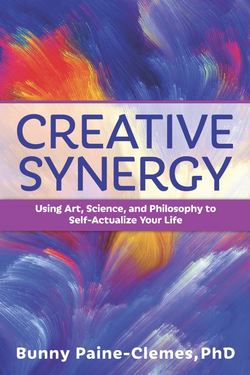Читать книгу Creative Synergy - Bunny Paine-Clemes - Страница 29
На сайте Литреса книга снята с продажи.
The Aspects of Creativity
ОглавлениеCreativity can be evaluated in a product. Like the judge who claimed to know pornography when he saw it, most of us know creativity when we see it, especially in its highest manifestations. The criteria, of course, are different in different fields. Harold Bloom’s test of literary greatness is the effect of the work:
The question we need to put to any writer must be: does she or he augment our consciousness, and how is it done? I find this a rough but effectual test: however I have been entertained, has my awareness been intensified, my consciousness widened and clarified? If not, then I have encountered talent, not genius. What is best and oldest in myself has not been activated.31
The three criteria he cites are “aesthetic splendor, cognitive power, wisdom.”32 In contrast, scientists speak of the “beautiful experiment,” one that embodies “unexpectedness, inevitability, and economy” as well as “depth.”33 One example is Newton’s dispersion of light through prisms to prove the revolutionary hypothesis that white light is composed of colors.34 (See Chapters 10-11 for aesthetic criteria.)
Creativity is dependent on the individual will. Robert Sternberg claims “the key attribute” of “creative people” is that they make a “decision to be creative.”35 In psychological terms, they are intrinsically motivated: interested in the task for its own sake. As a child, Nobel laureate Richard Feynman fixed radios for fun. Einstein’s sister reported that as a boy, he had eschewed ordinary play for math: “‘For days on end he sat alone, immersed in the search for a solution, not giving up before he had found it.’”36
Teresa Amabile has done many studies of intrinsic motivation. In one of her experiments, children were divided into two groups. Some were told they could play with crayons if they used colored markers first. Others were told the reverse: they had to play with crayons in order to use the markers. In both cases, children who could select their own art materials later were inclined to reject the tools that had been imposed on them as required. Instead both played with the ones that had been promised as rewards.37
Amabile has conducted many versions of this experiment, and she has found that extrinsic motivation—the anticipation of a reward—tends to extinguish intrinsic motivation—the inner willingness to perform a task. Occasionally intrinsic motivation remains when it was high originally and the subject is engaged in a heuristic task (one not following a formula by rote).38 Her Intrinsic Motivation Principle of Creativity reads as follows: “Intrinsic motivation is conducive to creativity; controlling extrinsic motivation is detrimental to creativity, but informational or enabling extrinsic motivation can be conducive, particularly if initial levels of intrinsic motivation are high.”39 If we enjoy a pastime for its own sake, we are more likely to be creative. “Controlling” factors such as deadlines and external authorities can dampen creativity unless we perceive their feedback as helpful during an intrinsically interesting task. For example, students who enjoy writing will tend to react favorably to instructor feedback on a rough draft. They will see it as “informational” and “enabling,” helping them to improve. On the other hand, those outer-directed students who dislike writing and are performing for a grade may be inclined to say, in exasperation, “Just tell me what you want.” In one study undergraduates with an internal locus of control (inner-directed rather than outer-directed) scored higher on creativity tests.40
The following cartoon reveals the failure of most extrinsic motivation.
CALVIN AND HOBBES © 1995 Watterson. Reprinted with permission of UNIVERSAL PRESS SYNDICATE. All rights reserved.
Creativity is dependent on the environment. Csikszentmihalyi stresses the importance of the field in supporting or rejecting creative work. In the art world of the twentieth century, New York gallery owners determined who was hot and who was not.41 In literary studies, the fads of the day determine what work is canonical. Blake, rarely taught in graduate school in the 1950s, became one of the most popular Romantic poets a few decades later; Milton was out by then, and Donne was in. Csikszentmihalyi goes so far as to say that a work is not creative unless it is endorsed by the field and changes it!42 At the extreme of such a position, Emily Dickinson’s work did not become “creative” until after her death.
